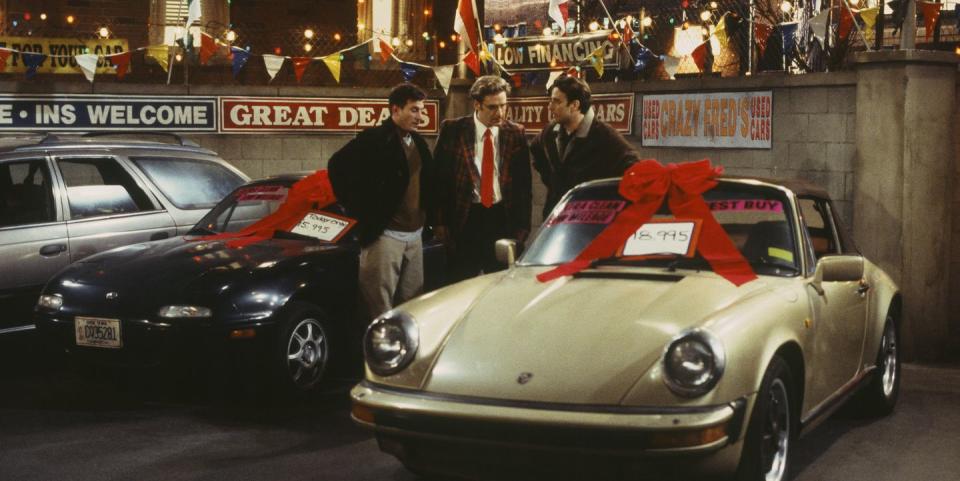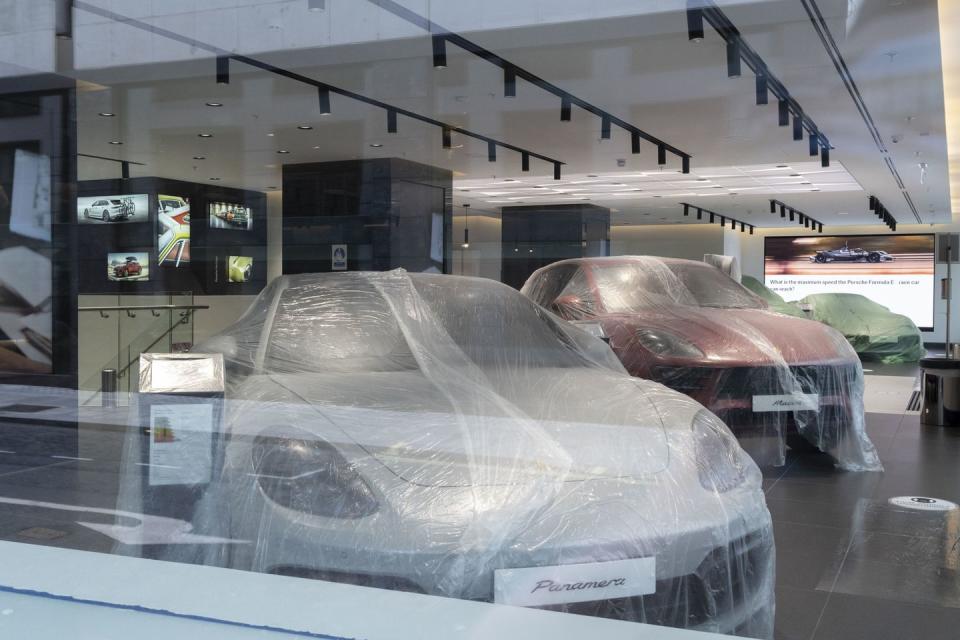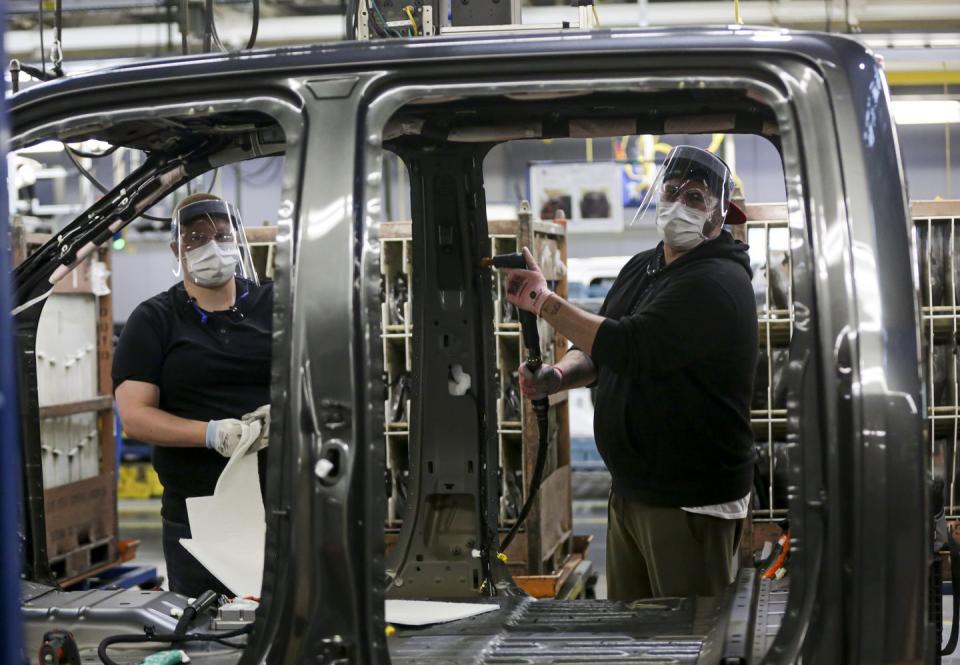No, That Crazy Price Carvana Offered For Your Car Isn't Too Good To Be True

An eight-year-old Tacoma selling for above its original sticker price. An instant cash offer thousands of dollars above the lease buyout price of a Mazda 3. A mainstream used car bought three years ago, now worth more than it was purchased for. It’s not a fluke, it’s not just Carvana or Vroom, and it’s not going away anytime soon. This is what the used car market looks like in 2021.
Carvana is back to paying insane values for used cars. Example form our Wrangler - Not quite as high as in August when this number was teetering at 45k, but still high. We paid $49k new 30 months ago, pic.twitter.com/GXg9YaYQVo
— Zerin Dube (@SpeedSportLife) March 11, 2021
The strangeness is most visible on social media, where it’s easy to find reports of online-only retailers like Carvana and Vroom offering stratospheric buyout prices for everyday used cars. Often prices for extra-hot used vehicles, like the Jeep Wrangler and Toyota Tacoma, approach or exceed the suggested retail price for their new counterparts. Clearly, one might naturally assume, someone is losing money here. “Disrupting” the market by burning investor cash is a classic Silicon Valley play, one that defined the rise of Uber. It wouldn’t be surprising to see online retailers using COVID-19-related market shifts and piles of VC money to gobble up market share while taking substantial losses.
Yet that’s not what’s happening. It may defy surface-level logic and stun onlookers, but the trade-in values and used car prices at online retailers aren’t outliers.
“The market is absolutely on fire,” Jonathan Banks, J.D. Power vice president and general manager of vehicle valuations, told Road & Track. “Dealers are going to pay you perhaps even more, depending on where you’re at. Especially if you have a Tacoma. Gosh, if you have a Tacoma it’s like a gold mine. Your Tacoma, your Wrangler, your F-150, dealers are going to pay you top-dollar price as well. So this is not a Carvana phenomenon.”
The real reason that places like Vroom, Carvana, and CarMax are getting the attention is that their offers for used cars are quick and accessible. A dealer may be willing to pay you more than your buyout price for a leased vehicle, but few take the time to stop in for a trade-in appraisal. Turning the process into a 2-minute web page that prospective sellers can fill out on a whim gives people a quick and easy glance into just how much the car is worth. And with inventory in such short supply, companies are happy to spend big to keep their selections varied. Plus, big numbers get people talking.
“[Companies like Vroom and Carvana] have been offering essentially crazy money on these vehicles, and the word of mouth marketing is strong; when it comes to automotive, getting a recommendation from someone you know is stronger than reading a review online about the exact same product,” Edmunds Senior Manager of Insights Ivan Drury told Road & Track. “And essentially they’re buying the inventory they need to conduct business. They need these cars anyway, but by paying extra they’re getting good feelings and vibes all around. And on the flip side, when they sell the cars, they charge a premium.”
Drury himself got an offer from Carvana that beat out what a dealer would pay. He accepted, had an easy time turning the car over to the company, and then watched as it sold the vehicle for $5000 more than they paid him. Road & Track editor-at-large Travis Okulski had a similar experience, selling his Mazda3 for more than its buyout price and seeing it transact weeks later for thousands more on top of that. These offers only exist because there are consumers on the other end ready to pay even more for that same used car.
This is partially because right now it’s hard to get a new car. Like most industries, the car industry relies heavily on forecasts formed based on previous years. When COVID-19 shut down the world, the playbook went out the window. Fearing that the economic downturn would stunt car sales for months, manufacturers cut back supplier deals and tightened their belts in spring of 2020 in anticipation of a brutal sales collapse.

But two months later, consumers were emerging from the shelter-in-place state with a newfound interest in private transportation. Sales rebounded quickly; suppliers didn’t. In the age of just-in-time manufacturing, spooling up factories is a months-long process. Raw materials and simple pieces were relatively easy to bring online. It was the specialized components that slowed things down. Computer chips, which require very specific facilities with limited flexibility, are still not being produced at pre-pandemic capacity. The companies that make them were able to woo buyers from consumer technology industries that were booming even in the midst of lockdown; automakers, though desperate to reinstate their contracts, were kicked to the back of the line. On top of all that, a fire at one of the world's largest automotive chip plants took key capacity offline.
While the factories were trying to sort out the supply chain, they also had to make up for two months without any production. Early COVID-19 shutdowns shuttered every major plant. Production restarted, but not before consumers had already hit the dealerships. Dealers that usually stocked two-month supplies of models had barely enough inventory to last a week.

Meanwhile, coronavirus restrictions had drastically stratified effects on consumers. Low-wage and in-person workers suffered from record-setting unemployment. Elsewhere, workers able to work from home were financially protected but had no outlet for discretionary spending. Absent lush vacations and nights out, they had more money than ever for cars. Sales boomed, especially of the most expensive models. Trucks, SUVS, and high-end cars became impossible to find on lots.
It’s no surprise that new car inventories have run dry. Every part of manufacturing is built around accurate forecasts of demand. Like just about everyone else, car companies had no idea how to plan for 2020. What was supposed to be a Great-Recession-esque collapse became a total run on the dealers, leading to record-low supply and record-high dealer profits. Dealers, overwhelmed by demand, started selling popular models for above sticker price. Price-conscious consumers looked to the used market and found that even there supply was limited. Rental car companies, long known as bottomless buckets of late-model used cars, had slashed all of their orders as travel came to a halt, forcing them to hold onto cars far after they would normally sell them to new owners. Of course prices were going to rise. But all of this demand has been poured into a cup that was already overflowing.
“The used market was healthier than it’s ever been before the pandemic,” Banks said, noting that improved reliability has long improved demand for used vehicles. “The pandemic just accelerated demand.”
That distinction is vital. This is a surge in demand, but that doesn’t make it a bubble. Banks points out that this isn’t driven by speculators or scalpers trying to make a quick buck. It’s driven by real demand. And, according to J.D. Power, don’t expect that record-setting demand to dry up anytime soon. Inventories are still low, the recovery is in full swing, used cars are better than ever, and the microchip shortage will suppress new car production for the foreseeable future. Prices, the firm predicts, will stay elevated for at least a year.
So if you’re tempted by an eye-popping trade-in number, don’t write it off as too good to be true. With some legwork you might be able to get even more for your car. The only question is, with prices up across all segments, what on Earth can you afford to replace it with? These days your dollar might not go as far as you think.
You Might Also Like

 Yahoo Autos
Yahoo Autos 